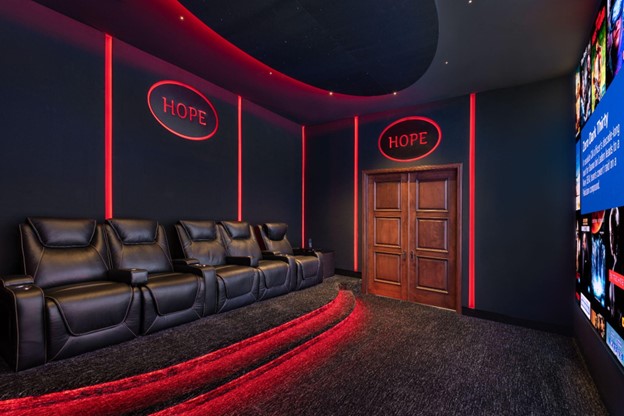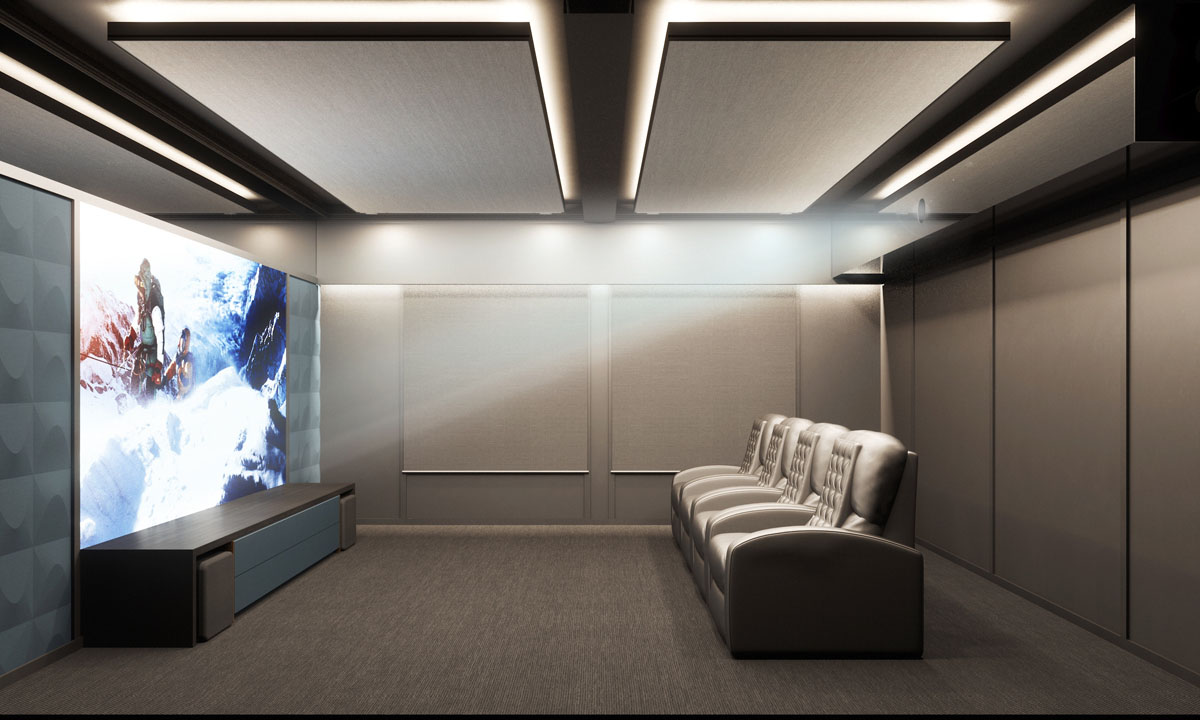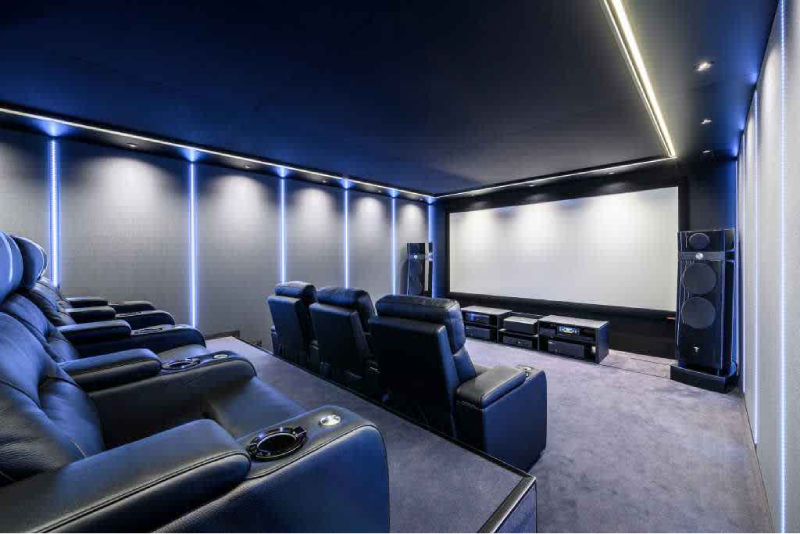The Comprehensive Guide to Home Theater Installation Tampa Homeowners Trust
The Comprehensive Guide to Home Theater Installation Tampa Homeowners Trust
Blog Article
Home Theater 101: Everything You Required to Know for a Motion Picture Experience in the house
Producing a home movie theater that measures up to the motion picture experience of an industrial theatre includes mindful factor to consider of numerous parts, including screen selection, sound systems, and area layout. Each aspect plays a pivotal function in attaining the desired ambiance and functionality. Whether you are considering the optimal display size or the complexities of border sound, recognizing these principles is important. As we discover these important parts, it becomes evident that the options made can significantly impact your general viewing experience, leaving one to ponder exactly how these decisions will shape your personal movie theater.
Choosing the Right Screen
When establishing a home movie theater, picking the best screen can make or damage the seeing experience - home theater design tampa. The display works as the centerpiece of your setup, affecting picture high quality, viewing angles, and overall visual. Secret factors to consider include display size, kind, and resolution
Initially, identify the appropriate display size based upon your space dimensions and seating range. A general guideline is to rest roughly 1.5 to 2.5 times the angled screen size for ideal viewing. Next, choose between different display types, such as fixed-frame, motorized, or retractable displays, each offering unique advantages. Fixed-frame displays typically give the very best image top quality, while motorized alternatives enable adaptability in area use.
Resolution is one more vital variable. For a really immersive experience, think about a screen made for 4K or perhaps 8K content, making sure sharpness and quality. Additionally, consider the display's gain, which affects brightness and contrast; a higher gain can enhance illumination in well-lit areas, while a reduced gain might be better for darker environments.
Choosing Audio Equipment
Audio devices is a critical component of any home theater system, dramatically boosting the total viewing experience. The option of audio gear can determine the depth, quality, and immersion of noise, essential for producing a cinematic ambience.
When picking audio tools, take into consideration a surround audio system, which usually includes a receiver, numerous speakers, and a speaker. A 5.1 or 7.1 network system is advised, where the first number represents the audio speakers and the 2nd the subwoofer, supplying an immersive soundscape. The receiver is the heart of the system, handling sound and video signals, and ought to sustain modern-day styles like Dolby Atmos for an enhanced spatial experience.
Quality audio speakers are necessary; seek designs that use a well balanced noise profile with good bass reaction. Floor-standing speakers can produce richer audio, while shelf choices save space. In addition, take into consideration wireless options for ease of installment, although wired systems commonly supply remarkable performance.

Optimal Seating Arrangements
Producing an optimal home movie theater experience hinges substantially on optimum seating setups. The setup of seats plays an important function in both convenience and seeing quality, straight affecting the total motion picture experience.
First, think about the screen size and watching range. A typical guideline is to place seats at a distance about 1.5 to 2.5 times the diagonal dimension of the display. This makes certain an immersive experience without stressing the eyes.
Next, altitude is important. If your seating remains in a tiered format, the back rows must be higher than the front to prevent blockages. For flat seats, make sure that the front row is not as well near to the screen, which everyone has a clear line of vision.
Additionally, consider the plan in terms of social characteristics. Group seating can enhance the common experience, while private seats might be preferred for personal viewing.

Last but not least, focus on convenience with ergonomic seating that supports extended viewing periods. Integrating recliners or supported seats can dramatically enhance the experience, making the home cinema a favored location for both home entertainment and leisure.
Lighting and Atmosphere
Reliable illumination and ambiance are necessary parts of a properly designed home theater, as they dramatically affect the seeing experience. The ideal illumination can boost the cinematic feeling, while poor selections can take away from it. For optimum outcomes, consider a split illumination approach that includes ambient, job, and accent lighting.
Ambient illumination offers basic lighting, guaranteeing that the space is not completely dark, which can stress the eyes. Dimmer switches are extremely recommended, enabling adjustments based upon the material being seen. Job illumination, such as wall surface sconces or flooring lights, uses practical lighting for activities like analysis or navigating the room without interfering with the total atmosphere.
Accent illumination can be used to highlight architectural attributes or develop focal points, including depth and rate of read more interest to the space. LED strip lights behind screens or along shelves can provide a refined glow that improves the aesthetic experience without overwhelming the customer.
Wiring and Installation Tips
A tactical circuitry setup is vital for accomplishing optimum performance in your home cinema system. Correct circuitry not only makes sure high-grade audio and video signals but also boosts the general aesthetic of your area. over here Begin by mapping out your format, determining where each component will certainly be placed, including your screen, speakers, and receiver.
When selecting cords, prioritize high-grade, suitably evaluated circuitry to minimize signal loss. HDMI cables need to be used for video clip connections, while audio speaker cord must match the specifications of your speakers and amplifier. Go with in-wall ranked cords to abide with security requirements and preserve a tidy look.

Verdict
In recap, developing an exceptional home movie theater experience calls for mindful factor to consider of different components, consisting of display option, audio tools, seating plans, illumination, and wiring. Each part plays a critical role in attaining ideal performance and setting, ultimately improving the pleasure of home amusement. By focusing on these elements, a motion picture ambience can be successfully reproduced, permitting for immersive checking out experiences that rival traditional cinema setups. Focus to detail in each location is vital for total fulfillment.
Developing a home movie theater i loved this that rivals the cinematic experience of an industrial theatre entails mindful consideration of numerous parts, consisting of display option, audio systems, and space format.When establishing up a home theater, picking the right display can make or damage the watching experience. Next, select between numerous display types, such as fixed-frame, mechanized, or retractable displays, each offering distinct benefits. For a really immersive experience, consider a display created for 4K or also 8K web content, guaranteeing sharpness and quality.In recap, producing an outstanding home movie theater experience requires cautious consideration of various components, including display option, audio devices, seating plans, illumination, and electrical wiring.
Report this page